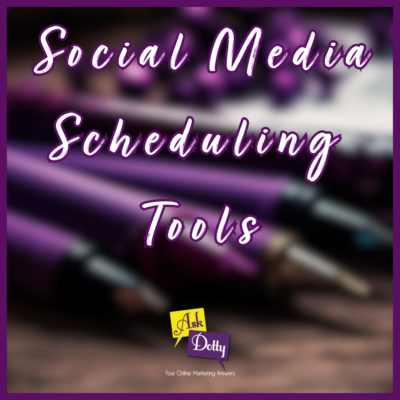
How to Repurpose Blog Content
How to Repurpose Blog Content
Repurpose to Get More Mileage out of Your Content
Understanding how to repurpose blog content is vital for any savvy content marketer. By doing so, you extend the lifespan of your great content and reach more audiences on different digital channels.
This comprehensive guide will explore strategies to repurpose your blog’s content effectively. We’ll begin by identifying high-performing posts using Google Analytics and SEO data. This strategy ensures we’re providing content that resonates with our viewers.
Next, we’ll explore how to turn blog posts into engaging video content and create 5-10 Instagram posts from one article. Not forgetting the power of audio in today’s world, we’ll discuss converting long-form written content into captivating audio stories ready for podcast platforms.
We will then look at refreshing your blogs specifically for LinkedIn users before delving into automation software that can simplify these processes. Finally, maintaining quality over quantity during this transformation process will be emphasized as a key principle in a successful repurposing strategy.
By mastering how to repurpose blog content across multiple channels, you’ll maximize every piece of written material while saving time and resources on new idea generation. So let’s get started!
Looking for Digital Marketing for DIY small business owners? AskDotty gives you actionable strategies to grow your business.
Identifying High-Performing Blog Posts for Repurposing
Repurposing high-performing blog posts is an effective strategy for increasing their reach and lifespan, leveraging your successful content in multiple ways. To identify these high-performing blogs, there are several steps and tools that you should consider:
Google Analytics: Google Analytics is a powerful tool for understanding how your audience interacts with your website. Pay attention to metrics such as page views, time on the page, bounce rate, and unique visitors. These can provide insights into which blog posts are performing well. If you are using WordPress, a Google Site Kit plugin will show your analytics in your WordPress dashboard.
Social Media Engagement: If your blogs are shared, track the number of shares, likes, comments, and other forms of engagement. High engagement often signifies a well-received post. You can initiate social sharing using tools provided by your blog software.
Comments and Discussions: Monitor the comment sections of your blog posts. Highly engaged audiences often spark discussions or ask questions, which can provide insight into the value of the content. Because of comment spam, I have turned the comments off on all my blogs.
SEO Performance: Using SEO tools like SEMrush or Moz, you can track how well your blog posts rank on search engine result pages (SERPs). High-ranking posts with competitive keywords are likely to be high-performing.
Conversions: Look at whether certain blog posts lead to conversions, such as newsletter signups, purchases, or downloads. You can set up conversion tracking in Google Analytics. If this method is used, you need to include a way to convert in each post.
Reader Feedback: Direct feedback from your readers, either through comments, emails, or direct messages, can be a good indicator of a post’s impact.
After identifying high-performing blog posts, consider how they could be repurposed. You could turn them into podcasts, videos, infographics, e-books, or email series. You could also update them with fresh content and data or expand on subtopics in new posts. This extends the life of your high-performing content and allows you to reach different segments of your audience who might prefer different types of content.
How SEO Data Can Guide Your Content Strategy
Yet, it’s not just concerning traffic figures; you have to think about how successful a post is from an SEO point of view. A high-performing blog post might rank highly for certain keywords or generate a ton of organic traffic. That’s a sign it could do well if repurposed onto other digital channels.
This approach ensures you build on a solid foundation when repurposing content across social media channels or into different formats like video. It spares you time and amplifies the odds of conveying reliably top-notch substance over all stages.
Using data-driven insights from tools like Google Analytics will help effectively guide your blog’s content strategy. It’s like having a content marketer’s secret weapon for successful repurposing strategies.
Maximize your blog’s potential by repurposing high-performing content across multiple channels. Use data-driven insights from Google Analytics for success.
Turning Blogs into Engaging Video Content
Transforming your written content into videos is a clever way to captivate your audience. Repurpose your successful blog posts into dynamic videos using AI tools.
Lumen5: This popular AI tool allows you to transform blog posts or any other text content into engaging videos. It has features like AI-powered storyboarding, a media library, and automatic text-to-video functionality.
DeScript: This AI software will take text and overdub your voice. You can add video clips or images from its stock library or upload your own. It will also transcribe a video and give you the text if you are working the other way around – going from a video to a blog post.
InVideo: InVideo has an AI-powered platform that makes it easy to convert text into videos. It includes various templates, many images and videos, and text-to-speech features.
RawShorts: RawShorts is an AI video builder that assists in creating professional explainer videos, product demos, and video ads from text. It offers a variety of templates and styles to suit different brands.
Animaker: Animaker uses AI to help create animated videos from text. It features an easy-to-use interface with various customization options, including characters, animations, music, and voiceover options.
Synthesia: An AI tool that helps you create videos from text, Synthetic uses GPT-3 to understand the text and generate relevant video clips.
Remember, AI tools can save time but may not be perfect. Reviewing and editing the videos they produce to ensure they meet your quality standards and effectively communicate your message is important.
Turn your blog posts into captivating videos with SEO data, engage your audience. Let your content shine.
Creating Multiple Instagram Posts from One Article
Creating eye-catching images for social media is essential to a successful digital marketing strategy. Luckily, several tools make this process simple, even for those with minimal design experience.
The following are some of the most popular tools:
Canva: This is a user-friendly graphic design tool used by both beginners and professionals. It offers an extensive range of templates, fonts, images, and illustrations that you can use to create engaging social media images. There are free and paid versions.
Adobe Express: Adobe Express (it was called Adobe Spark) is another tool for creating social media graphics and short videos. It provides numerous templates and customization options to help you create high-quality visuals.
PicMonkey: PicMonkey is a photo editing and graphic design software that offers a wide range of features like filters, text overlays, and templates, which can be used to create engaging social media images.
VistaCreate: VistaCreate is a free graphic design tool with thousands of free templates for you to choose from. Pick a template you love, adjust it to your project, and post or print! Use design to tell your brand story like no one else can.
Snappa: Snappa is a graphic design tool for social media marketers, bloggers, and small businesses. It allows users to create online graphics for social media, ads, blogs, and more in a snap with no design skills required.
Pablo by Buffer: Pablo is a simple online design tool offered by Buffer, designed specifically for creating social media images. It’s extremely user-friendly and perfect for creating simple images quickly. This is a perfect choice if you are using Buffer for scheduling posts.
Fotor: Fotor is a powerful online photo editing tool with various features like photo editing, collage making, and graphic design. It’s great for creating unique social media posts.
Each tool has unique features and benefits, so choose one that best fits your needs and skill level. Remember to align your designs with your brand and create visuals that resonate with your target audience.
Design tips for eye-catching graphics
Create visually appealing graphics that capture attention. Use one of the tools above to transform key points from your blog post into engaging images.
Design tips:
Favor simplicity: Keep designs clean and uncluttered.
Use relevant imagery: Align photos or illustrations with the blog post topic.
Incorporate brand elements: Use consistent colors, fonts, and logos that represent your brand.
Writing compelling captions for each visual
Captions play a vital role in conveying the message behind each image. They should be concise yet informative to pique interest and encourage engagement.
Caption guidelines:
Create intrigue: Write something intriguing about the image that encourages followers to click for more information.
Add value: Provide useful information about the original article, maintaining consistency between visual and written content while indirectly promoting the blog post through social media channels.
This strategy allows you to create 5-10 Instagram posts from one article, delivering high-quality content and increasing potential reach across digital channels. So why wait? Start transforming those popular blogs today.
Maximize your blog’s reach and engagement by repurposing content into captivating Instagram posts. Learn how to create eye-catching graphics and write compelling captions for each visual.
Here are 5 Social Media posts I have created for THIS blog post. When I use them on social media, I will link to this post where they can find more information on the topic. The background images used for these posts are from MidJourney – an AI image program.





Converting Long-form Content Into Audio Stories
Repurposing text into audio can help you reach a broader audience, including people who prefer listening over reading and those who are visually impaired. Several AI-powered tools can convert text to speech (TTS) and create high-quality audio files.
Amazon Polly: Amazon Polly is a service that turns text into lifelike speech using advanced deep learning technologies. It supports multiple languages and a wide range of voices.
Google Text-to-Speech: Google’s Text-to-Speech technology powers applications to read the text on your screen aloud and supports multiple languages and various voices.
Microsoft Azure Cognitive Services Speech Service: This cloud-based API provides advanced algorithms to process spoken language. It includes Text-to-Speech services with various voice fonts.
IBM Watson Text to Speech: Watson Text to Speech gives your brand a voice, enabling you to improve customer interaction and make your business more accessible.
Natural Reader: This is a professional text-to-speech program that converts any written text into spoken words. It can convert documents, web content, and eBooks into speech.
iSpeech: iSpeech provides high-quality, human-like automated voiceovers and text-to-speech services for developers and businesses.
Balabolka: Balabolka is a free text-to-speech software with customization options. It can save synthesized speech to various audio formats.
ReadSpeaker: This powerful text-to-speech software offers high-quality, lifelike voices and is easy to integrate with any platform.
Remember that while these tools do a great job of converting text to speech, they may not completely replace the nuance and emotion conveyed by a human voice. It’s always best to review the generated audio to ensure it matches the tone and style of your content.
Transform your blog posts into captivating audio stories with one of the above-mentioned tools. Give your content a voice and reach a whole new audience.
Refreshing Blog Content for LinkedIn Audience
You need to spruce up your blog posts to impress professionals on LinkedIn. Repurpose your content to make it relevant and valuable for this platform.
Tailoring Content for LinkedIn
To engage the LinkedIn community, transform your original blog posts into new LinkedIn Newsletters or articles. Keep the essence of the original content, but add fresh context to appeal to professionals in your industry.
Turn technical how-to guides into thought leadership pieces or transform informative listicles into discussion starters about industry trends. The key is to provide unique insights tailored for LinkedIn users.
Remember, each social media channel has its style and format. What works on Instagram or Facebook may not resonate on LinkedIn, where professionals are more interested in industry-related topics.
Don’t limit yourself to written content. Use infographics or SlideShare presentations to break down complex information into digestible chunks. This way, you can deliver high-quality content that educates and informs busy professionals.
Always focus on delivering high-quality content. Whether it’s a listicle, SlideShare presentation, infographic, or podcast episode, aim to increase organic traffic, boost brand awareness, engage new audiences, and foster subscriber growth.
Transform your blog posts into engaging LinkedIn Newsletters and reach a professional audience. Repurpose content for maximum impact.
Automate Your Strategy and Repurpose Content
In the digital world, efficiency is key. It can be daunting with the multitude of marketing channels and social media platforms to manage. That’s where automation software comes in.
Automation software helps you repurpose your blog content across various social media channels. It saves time and resources while expanding your reach. Plus, it ensures your messages are consistent and high-quality.
Choose the Right Automation Software
Repurposing content across various social media platforms can be time-consuming. Fortunately, many tools can automate this process, helping you to schedule posts, monitor their performance, and engage with your audience more effectively.
Social Media Scheduling Tools:
CoSchedule: CoSchedule is a content marketing platform with social media post-scheduling. It allows you to plan all your content in one place, including blog posts, social media, and email. It has a tool called ReQue that automatically posts evergreen content that you load into the system. This is my preferred tool.
Buffer: Buffer is a user-friendly platform for scheduling and publishing posts for Twitter, Facebook, LinkedIn, Instagram, and Pinterest. It also provides analytics to track the performance of your posts.
Hootsuite: Hootsuite is a comprehensive social media management tool that allows you to schedule posts, monitor mentions, and analyze performance across multiple social media platforms.
Sprout Social: Sprout Social is a powerful platform for social media management. It features post-scheduling, analytics, and engagement tools and can integrate with various social networks.
Later: Later is particularly useful for Instagram but also supports Facebook, Twitter, and Pinterest. It has a visual content calendar and feed planning tools to help you organize your posts. The paid version will schedule videos and images.
Canva: If you are creating graphics, images, or videos in Canva, then this is the perfect scheduling tool for you.
AgoraPulse: This comprehensive social media management tool includes scheduling, analytics, and social inbox features to manage your conversations.
MeetEdgar: MeetEdgar is a social media scheduling tool with unique features like automatic post-resharing and content category-based scheduling.
Tailwind: A personalized email and social media marketing plan generated for you. Tailwind gives post ideas and real-world examples— guiding you every step of the way — so you don’t stress about content creation.
Remember that each tool has its strengths and weaknesses, and it’s essential to consider your specific needs when choosing a social media automation tool. Some factors to consider include the platforms you use, the size of your team, your budget, and the features you need.
Maximize your digital marketing efforts with automation software. Repurpose blog content across multiple channels effortlessly and reach a wider audience.
Quality Trumps Quantity When Repurposing Content
Producing first-rate content is paramount in the realm of content marketing. Whether turning a listicle into snazzy SlideShare presentations, creating a PowerPoint infographic to break down complex topics, or spinning off a Quora thread, quality should be your priority.
Consistency is Key
When repurposing, make sure your message remains consistent across all formats. If you’re transforming a blog post into a podcast, keep the essence intact while adapting it for audio consumption. This not only boosts organic traffic but also increases brand awareness.
To maintain quality and relevance, use tools like Grammarly to proofread and edit your written content before publishing on different platforms. And don’t forget to leverage automation software like Buffer to seamlessly manage posting schedules across multiple digital channels.
Listicles: Turn them into SlideShare presentations, expanding each point with visuals and additional information.
Pictorial Content: Create eye-catching infographics in PowerPoint for easy sharing on social media, especially Instagram.
User-generated Content: Spin-off threads from popular Q&A sites like Quora to add fresh perspectives and foster community engagement.
FAQs about How to Repurpose Blog Content Across Multiple Channels
How to Repurpose Content for Different Platforms?
You can repurpose your blog content by transforming it into formats like videos, infographics, podcasts, and social media posts tailored to each platform’s audience.
How to Repurpose Blog Content?
To repurpose your blog content, identify high-performing posts, convert them into formats suitable for other digital channels, and ensure consistent quality throughout the transformation process.
What is Blog Repurposing?
Blog repurposing involves transforming your existing written content into new forms of media to reach a wider audience on diverse marketing channels.
How to Repurpose Blog Content on Instagram?
Create 5-10 Instagram posts from a single article by extracting key points, designing eye-catching graphics, and writing compelling captions that align with each visual.
Conclusion
Repurposing blog content is a smart way to maximize its value and reach a wider audience across various digital channels.
Identify your top-performing blog posts using tools like Google Analytics and use SEO data to plan your content strategy.
Turn your blogs into engaging videos to captivate your audience and create multiple Instagram posts from one article for more visibility.
Convert your long-form content into audio stories to offer a unique experience and refresh your blog content for LinkedIn to engage with a professional audience.
Streamline the repurposing process with automation software, but maintain quality consistency.
By following these strategies, you can deliver high-quality content and effectively engage with your target audience across various digital channels.
Want more ideas to grow your business? Join the AskDotty membership today!


